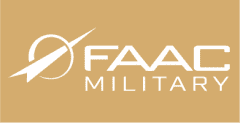Better Fire Pump Operator Training for Airfields and Air Force Bases
Published

Eielson Air Force Base in central Alaska is less than 200 miles from the Arctic Circle and often sees temperatures as low as minus 50º Fahrenheit. As Staff Sgt. Joseph Cappel (a 354th Civil Engineer Squadron fire department crew chief) explained in 2018: “These conditions are vicious; it makes training difficult. If the temperatures drop below negative 10 [degrees] it becomes a safety concern for our Airmen and we risk damaging our own hoses and trucks.”
This means that Eielson AFB’s fire fighting crew may be limited to “dry training” for up to a third of each year. Pump operator training is especially affected by these conditions, both because of the complexity of the task itself and because many pumps must be adjusted for freezing conditions.
The solution at Eielson AFB—as is the case in departments in many cold-weather regions—has been to adopt simulation-based pump operator training.
Pump Operator Training Simulations Offer Everyday Benefits
In 2018 Eielson AFB acquired a PumpOps fire pump operator training simulator from FAAC. PumpOps creates the visceral experience of controlling the pump and coping with issues with pressure, flow, equipment faults, and the needs of the nozzle team.
As Staff Sgt. Cappel noted at that time, this particular simulator “is very realistic; we worked with the manufacturer to get the pump tailored to match our equipment here at Eielson [including gauges and controls from the fire pump’s original manufacturer]. You can essentially become a pump ops master with this [simulator].”
Staff Sgt. Cappel and his team were pleased to find that the simulator wasn’t just a “stop-gap measure” for cold weather training. As Master Sgt. Christopher Lopardi (354th Civil Engineer Squadron’s assistant fire chief) explained:
“Of course the biggest benefit is that it is a safe training platform to use in the winter. [But] on top of that we can be more flexible with our training schedule all while saving the Air Force thousands of dollars in truck repairs caused by regular wear and tear, and water costs.”
According to the Air Force, using a pump operator training simulator (rather than flowing water out on the training ground) regularly saves Eielson roughly $5200 in water alone—not to mention pump savings that come with avoiding equipment wear and eliminating the risk of equipment damage or injury to personnel.
PumpOps also lets pump operators get a feel for working with fire-suppressing foam in all weather conditions, without the EPA/OSHA/workplace hazard and cleanup costs inherent in flowing actual foam on the training ground.
Not Just Keeping Out of the Cold
“The simulator isn’t just beneficial for those of us in cold climates,” Master Sgt. Lopardi further noted. “We’ve received calls from departments from all over the U.S. and Canada wanting to know more about it. They recognize that the [PumpOps Simulator] is a great supplement to fire pump training, regardless of the weather.”
This has become even more the case in recent years. FAAC firefighting simulators (including their pump operator training sims) can now be integrated into FAAC’s complete “Continuum” of fire training simulation solutions. This ecosystem of simulation solutions includes fire apparatus driving simulators, scenario emergency medical response sims, fire and hose control simulators that can emulate foam and other fire suppressants. FAAC can tie this altogether with inCommand, a virtual command and control training platform that prepares emergency crews to maintain situational awareness as they balance the often competing demands of managing the scene of a complex or large scale emergency incident.
With inCommand and the Continuum of Training, firefighting teams benefit from comprehensive, immersive training—regardless of the weather and with no risk of accident or injury.
* Courtesy of dvidshub.net Commercial Use Authorized. The appearance of U.S. Department of Defense (DoD) visual information does not imply or constitute DoD endorsement.

